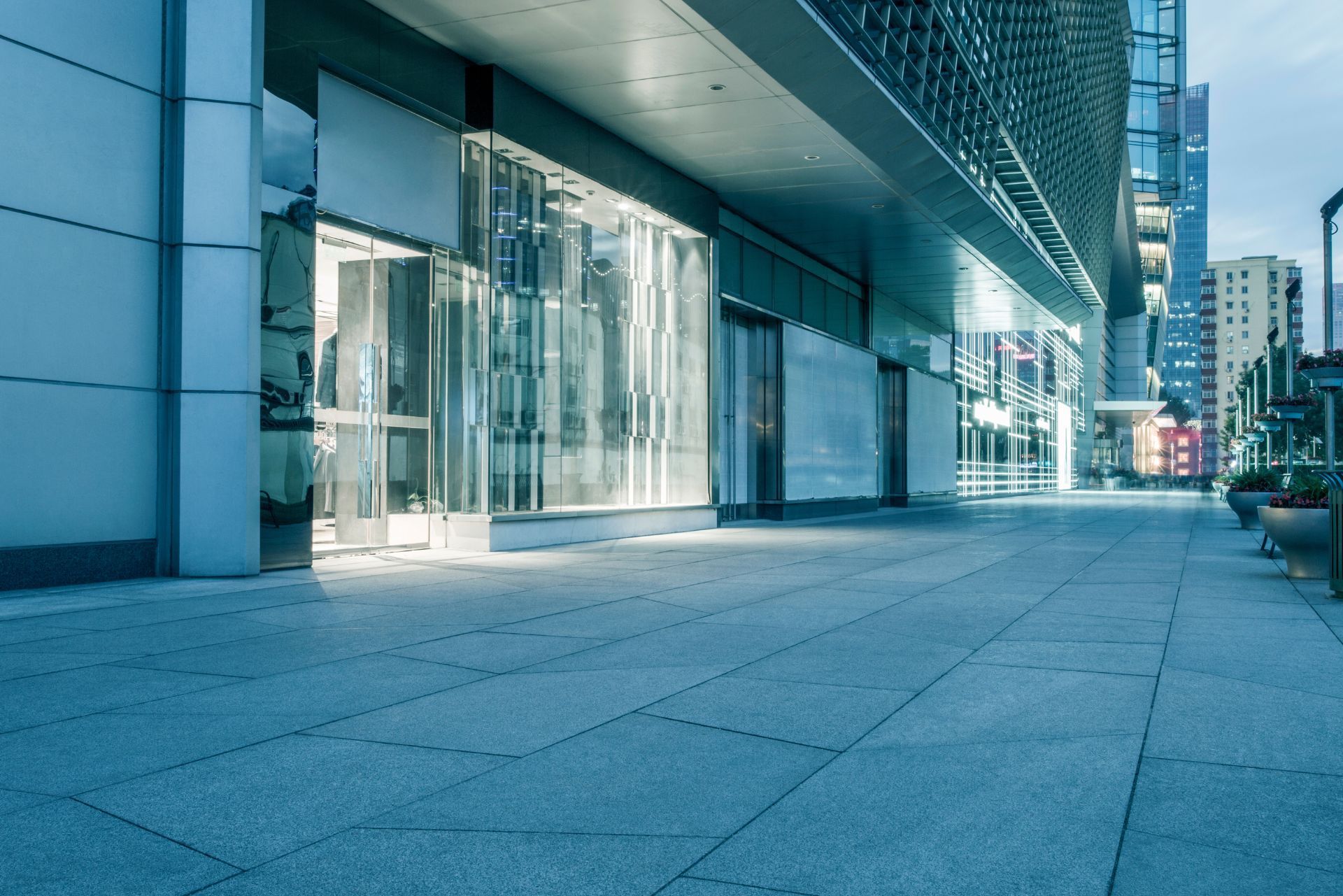Top 3 Recommended Policies

In today's unpredictable environment, protecting commercial property has become more crucial than ever. Whether you own a small business, manage a large commercial complex, or operate an industrial facility, understanding commercial property insurance is essential to safeguard your assets against risks like natural disasters, theft, or accidental damage. This comprehensive guide will walk you through the key aspects of commercial property insurance, current market trends, and practical advice to help you make informed decisions.
Recent data from the WTW's Commercial Lines Insurance Pricing Survey (CLIPS) highlights a 6.1% increase in U.S. commercial insurance rates in Q3 2024, underscoring the dynamic nature of this insurance sector. Understanding these shifts will help businesses better prepare for the costs and coverage options available.
What Is Commercial Property Insurance?
Commercial property insurance is a type of coverage designed to protect businesses from financial losses related to damage or destruction of physical assets. This includes buildings, equipment, inventory, furniture, and other tangible property essential to business operations. Such insurance is crucial for safeguarding the investments that a company has made in its infrastructure and assets, which can be significant, especially for small to medium-sized enterprises.
Unlike personal property insurance, commercial policies are tailored to the unique risks faced by businesses, such as fire, vandalism, natural disasters, and sometimes business interruption. The scope of coverage can vary widely depending on the insurer and the specific policy terms. Businesses must carefully assess their specific risks and choose a policy that not only covers common threats but also addresses industry-specific vulnerabilities that may arise.
Key Components of Commercial Property Insurance
Typically, commercial property insurance covers:
- Building Coverage: Protection for the physical structure owned or leased by the business.
- Contents Coverage: Insurance for equipment, inventory, and furniture inside the building.
- Business Interruption Insurance: Compensation for lost income if the business cannot operate due to covered damage.
- Additional Coverages: Optional add-ons like equipment breakdown, flood, or earthquake insurance.
Understanding these components helps businesses tailor their insurance to meet specific needs and risks. For instance, a retail store may prioritize contents coverage to protect its inventory, while a manufacturing facility might focus on equipment breakdown coverage to ensure that production can continue with minimal disruption. Additionally, businesses located in areas prone to natural disasters may find it essential to include specific coverages for floods or earthquakes, which are often excluded from standard policies.
Furthermore, many insurers offer risk management resources as part of their commercial property insurance packages. These resources can include safety training programs, loss prevention consultations, and access to industry-specific guidelines that help businesses minimize their exposure to risks. By taking advantage of these services, companies can not only protect their physical assets but also foster a culture of safety and preparedness that benefits their overall operations.

Market Trends and Pricing Dynamics in 2024
The commercial property insurance market has experienced significant fluctuations recently, influenced by natural disasters, inflation, and evolving risk landscapes.
In 2024, the market saw premium increases exceeding 20%, marking one of the most challenging periods in two decades. However, by mid-year, signs of moderation emerged, with premium growth rates slowing to an average of 8% to 12% for many policyholders depending on their risk exposure. This shift suggests a gradual stabilization after years of steep increases. The CBIZ report provides an insightful overview of these trends.
Impact of Natural Disasters
Natural catastrophes have heavily influenced commercial property insurance pricing and availability. The first half of 2024 alone saw tropical storm-related losses in the U.S. reach $51 billion, with hurricanes Milton and Helene responsible for 80% of those damages, according to Munich Re data.
Additionally, severe thunderstorms in 2023 caused $42 billion in damages, 87% above the 10-year average, further stressing insurers and driving premium hikes. The unprecedented Los Angeles wildfires in 2025, with insured losses estimated up to $30 billion, also highlight the increasing exposure of commercial properties to climate-related risks. As insurers grapple with these escalating costs, many are re-evaluating their risk assessment models, incorporating advanced analytics and predictive modeling to better forecast potential losses. This evolution not only aims to enhance underwriting accuracy but also to foster a more resilient insurance ecosystem capable of withstanding future shocks.
Underwriting Margins and Market Stability
Despite these challenges, commercial lines achieved underwriting margins above the long-term average in 2023, even with slower premium growth. This indicates that insurers are managing risk more effectively, balancing profitability with market demands. The 2024 S&P Global Market Intelligence report offers a detailed look at industry performance.
Moreover, the increasing adoption of technology in the insurance sector is playing a pivotal role in shaping market dynamics. Insurers are leveraging artificial intelligence and machine learning to streamline claims processing and enhance customer service, which can lead to improved customer retention rates. Furthermore, the integration of IoT devices in commercial properties allows for real-time monitoring of risks, enabling proactive measures to mitigate potential damages. As these technological advancements continue to evolve, they are expected to further stabilize the market, providing both insurers and policyholders with greater confidence in their risk management strategies.
Common Risks and Why Adequate Coverage Matters
Commercial properties face an array of risks that can result in substantial financial loss. Understanding these risks is vital for selecting appropriate coverage levels.
Natural Hazards
Floods, hurricanes, wildfires, and severe storms are among the most frequent and costly risks. As climate change intensifies, these events are becoming more frequent and severe, leading to higher insurance claims and premiums.
For example, the 2024 market has seen a rare quarterly decline in commercial property insurance rates by 0.94%, the first since 2017, reflecting some market improvement despite ongoing natural catastrophe pressures. This slight dip in rates may provide a temporary reprieve for business owners, but it is crucial to remember that the underlying risks remain. Many regions are experiencing shifts in weather patterns that can lead to unexpected flooding or wind damage, which necessitates a proactive approach to risk management and insurance coverage.
Underinsurance: A Hidden Threat
One of the most critical issues in commercial property insurance is underinsurance. A study by Kroll found that 90% of appraised buildings were underinsured, with 68% of those valued between 2020 and 2021 underinsured by 25% or more.
Underinsurance can lead to significant out-of-pocket expenses after a loss, as claims may be paid based on the insured value rather than the actual replacement cost. Regularly reviewing and updating property valuations is essential for adequate protection. Additionally, businesses should consider the potential impact of inflation and rising construction costs when determining their coverage needs. In many cases, the cost to rebuild or repair a property can exceed initial estimates, especially in areas experiencing rapid development or supply chain disruptions. This highlights the importance of not only having sufficient coverage but also ensuring that policies are tailored to the specific risks faced by the business.
Moreover, the complexities of commercial property insurance can often lead to confusion regarding policy limits and exclusions. Business owners should engage with insurance professionals to fully understand the nuances of their coverage, including any gaps that may exist. This proactive approach can help mitigate the risks associated with underinsurance and ensure that businesses are adequately protected against unforeseen events, ultimately safeguarding their financial future.
How to Choose the Right Commercial Property Insurance
Selecting the right policy involves assessing your unique risks, understanding coverage options, and working closely with insurance professionals.
Assess Your Risks
Begin by evaluating your property's location, construction type, occupancy, and exposure to natural hazards. Businesses in wildfire-prone or flood-prone areas may require additional endorsements or separate policies. Additionally, consider the specific nature of your business operations; for instance, a manufacturing facility may face different risks compared to a retail store. Understanding these nuances can help you identify potential vulnerabilities and tailor your coverage accordingly. Engaging in a thorough risk assessment can also reveal less obvious threats, such as cyber risks or equipment breakdowns, which may necessitate specialized coverage options.
Understand Policy Limits and Deductibles
Policy limits determine the maximum amount an insurer will pay for a covered loss, while deductibles are the out-of-pocket costs before coverage kicks in. Balancing these factors affects premium costs and financial protection. It's crucial to analyze your financial situation and risk tolerance when selecting these limits. For example, a lower deductible might lead to higher premiums, but it could also provide peace of mind in the event of a significant loss. Moreover, reviewing your policy regularly can help ensure that your coverage aligns with any changes in your business operations or property value, allowing you to adjust limits and deductibles as necessary.
Consider Business Interruption Coverage
Damage to property can halt operations, leading to lost revenue and ongoing expenses. Business interruption insurance helps cover these losses, providing critical financial support during recovery. This coverage can be particularly vital for businesses that rely on a steady cash flow to meet payroll and other fixed expenses. Furthermore, it’s important to understand the terms of this coverage, including the waiting period before benefits kick in and the duration for which you can claim. Some policies may also offer extended coverage for additional expenses incurred while you work to restore operations, such as renting temporary space or equipment. By factoring in these elements, you can better prepare for unforeseen disruptions and safeguard your business's financial stability.

The Future of Commercial Property Insurance
The commercial property insurance market is evolving in response to emerging risks and technological advancements. The global market is projected to reach $724 billion by 2032, reflecting growing demand and expanding coverage options. As businesses increasingly recognize the importance of safeguarding their assets, the insurance industry is adapting to meet these needs with tailored solutions that address specific industry challenges.
Insurers are increasingly incorporating data analytics, artificial intelligence, and risk modeling to price policies more accurately and manage claims efficiently. These technological innovations not only enhance the underwriting process but also provide businesses with insights into their risk profiles, allowing for more informed decision-making. At the same time, climate change remains a significant challenge, prompting innovation in risk mitigation and resilience strategies. Insurers are developing specialized products that address climate-related risks, such as natural disasters and extreme weather events, ensuring that businesses are better prepared for the unexpected.
Preparing for a Changing Risk Landscape
Businesses must stay informed about market trends and emerging risks. Regularly updating insurance coverage, investing in risk reduction measures, and engaging with knowledgeable brokers can help navigate this complex environment. Additionally, companies are encouraged to adopt a proactive approach by conducting regular risk assessments and implementing comprehensive disaster recovery plans. This not only helps in minimizing potential losses but also demonstrates to insurers a commitment to risk management, which can lead to more favorable policy terms.
The
Insurance Information Institute (Triple-I) emphasizes the importance of stable growth and adaptation despite challenges like inflation and climate change. Furthermore, as the landscape of commercial property insurance continues to shift, businesses should consider the role of sustainability in their operations. Insurers are increasingly rewarding companies that demonstrate environmentally responsible practices, which can lead to lower premiums and enhanced coverage options. By integrating sustainability into their core strategies, businesses not only contribute to a healthier planet but also position themselves favorably within the evolving insurance market.
Conclusion
Commercial property insurance is a vital tool for protecting business assets against a wide range of risks. The market in 2024 reflects both challenges and opportunities, with premium rates stabilizing after a period of sharp increases and insurers improving underwriting performance.
Understanding coverage options, staying vigilant about underinsurance, and preparing for natural disasters are key steps for businesses to secure their future. By staying informed and proactive, businesses can navigate the evolving insurance landscape with confidence.
Contact Us
Phone
Location
